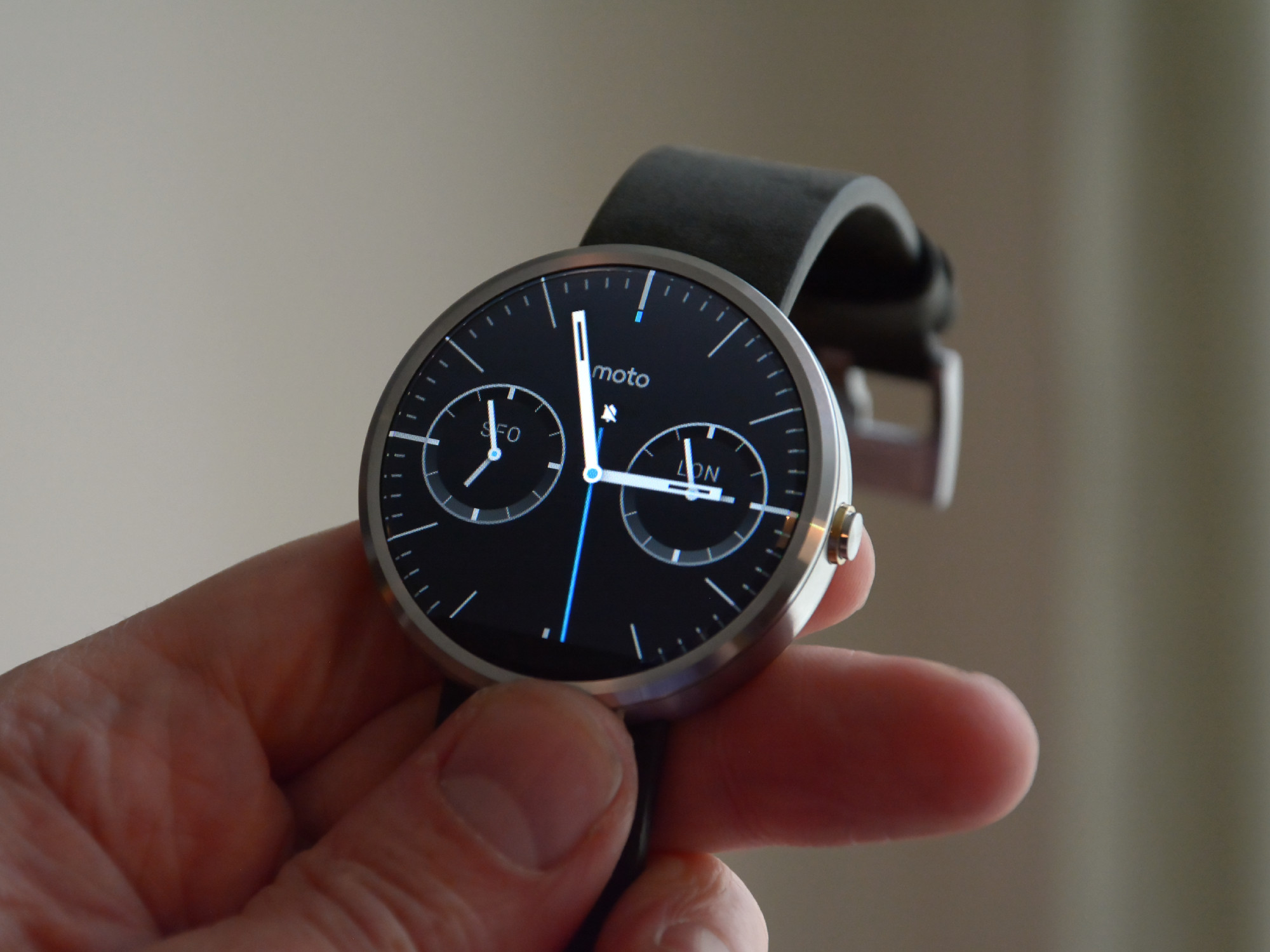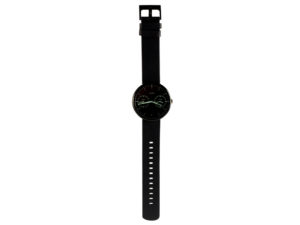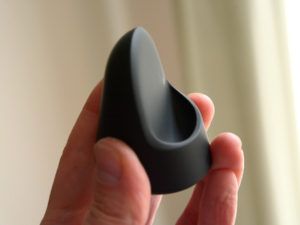Update: The Moto 360 has now been superseded by the Moto 360 2, but you can still buy the original. It’s a lot cheaper than it was, available now for around £150 from major retailers such as John Lewis. However, should you buy one? I’m not convinced it would be a sound buying decision.
The Moto 360, though undeniably attractive to look at and wear, is a first-generation Android Wear device. It suffers from poor battery life, and its OMAP CPU is slower than most modern smartwatches. The 2nd generation Moto 360, on the other hand, ups the design ante, improves battery life and boosts performance by a significant margin.
What’s more, the Moto 360 2 is available in two different sizes, the larger 46mm model coming with an extra large battery, and can be customised via Motorola’s Moto Maker service. If you can afford the extra £60, it’s well worth considering. You can read our original Moto 360 review below.
Since the very early days of the mechanical clock, one design element has dominated all others – timepieces have always had circular faces. But in the brave, square new world of smartwatches and fitness bands, it seemed the classic, rotund clock face had mostly been abandoned, or at least it did until the arrival of the Motorola Moto 360.
Motorola Moto 360 review: design
Perhaps it was due to manufacturing efficiencies – you can cut more squares from a sheet of LCD than round ones, after all – but a square watch, particularly one as bland and boring as the LG G Watch, just doesn’t look as good as a round one, as the Moto 360 proves.

It isn’t only the shape, though. Everything about the design of the Moto 360 screams sophistication and high-end charm. The edge of the glass front is sharply bevelled, and that bevel slices backwards towards the watch’s steel body, where it plummets abruptly into the watch’s vertical sides. There’s a good-sized button on the side for waking the watch up and turning it off, and the thick leather strap feels beautifully well made.
The Moto 360 looks great whether you buy the silver model, which comes with a grey strap, or the black one, which comes with a black strap. It’s also comfortable to wear, which isn’t something we can say for all the smartwatches we’ve tried. And there’s a good selection of alternative watch faces preinstalled; you get six as standard, and there’s already an extensive selection to choose from on Google Play.
Motorola Moto 360 review: features
Flip it over and you’ll see seven small dots on the back – evidence of the fact that the Moto 360 is equipped with an optical heart-rate monitor – and in another triumph of clean design over clutter, no exposed charging contacts. The Motorola Moto 360 employs Qi wireless induction charging, and a charging cradle comes supplied in the box.

Plug that charger into the supplied mains USB adapter, or a spare socket on your PC or laptop, and all you need to do to charge the Moto 360 is drop it into place. In a neat touch, the watch face rotates sideways into an alarm-clock mode whenever you do this, indicating the amount of battery charge remaining with a blue line that extends gradually around the circumference of the watch face.
Like other smartwatches we’ve tested, the Moto 360 is tough, too: an IP67 rating means it will survive being worn in the shower or even the swimming pool, although we wouldn’t advise diving too deep as it’s only rated for immersion in 1m of water for up to 30 minutes. Up front, the watch face is made from scratch- and shatter-resistant Gorilla Glass 3.
Motorola Moto 360 review: specifications, everyday use and battery life
The round design certainly sets the Moto 360 apart from the Android Wear competition. However, since it’s running Android Wear, there’s little difference in the way it works. You navigate around the watch’s interface by swiping and scrolling, notifications pop up on Google Now style cards, and you can use voice recognition to set alarms, calendar entries and kick off navigation, among other things.
Android Wear was designed from the start to support round watch faces, so the Moto 360’s round design works perfectly, and the 1.56in-diameter, 320 x 290-resolution IPS display beneath the glass is bright enough for comfortable viewing in most conditions (we measured it at 502cd/m2 with a mostly white watch face). It has noticeably more get up and go than the G Watch at maximum brightness (404cd/m2), and since it’s the first Android Wear device to have a light sensor, it will adapt to its surroundings as well.
By default, the Moto 360’s display remains off most of the time, but the screen will activate whenever you lift your arm and twist your wrist. It’s a gesture that works 99% of the time, and much more reliably than on the LG G Watch, so there’s no need to leave on the screen permanently.
As with many other wearables (such as the Samsung Gear Live), the Moto 360’s heart-rate monitor can only take a one-off measurement and can’t continuously monitor your pulse, rendering it useless as a training tool. It’s affected by movement, too, so you have to stay still while it does its thing. On the plus side, the measurements appear to be reasonably accurate, and we do like the Motorola Heart Activity app that goes with it. This works in a similar manner to Android Wear’s standard pedometer app, displaying your heart rate over the past week, and keeps its beady eye on things by measuring your pulse rate periodically when it spots you’re up to something more active than sitting at your desk.

It will have difficulty monitoring any kind of activity if you happen not to be wearing the watch at the time, though, and poor battery life means you’ll likely spend a fair amount of time with the Moto 360 off your wrist. With the screen in default mode and set to switch off periodically, the Moto 360 never lasted longer than a day and a half for us.
It’s an improvement on the performance US customers experienced before a recent update, but still not brilliant. We also ran our new smartwatch battery test on the Moto 360: we connected it to a test Gmail account set up with reminders every five minutes, set the screen to its minimum timeout setting and full brightness. After a few hours of testing we were able to project a full runtime of 27 hours. The LG G Watch gained 50 hours in this test, and the Samsung Gear Live 36 hours.
What’s to blame? We suspect it has something to do with the 360’s processor, a four-year-old, 45nm Ti OMAP chip that’s also responsible for the Moto 360’s slightly stuttery performance. Other Android wear watches are based on more modern, more efficient componentry, and the benefits are evident.
Motorola Moto 360 review: verdict
In terms of design and overall appeal, the Motorola Moto 360 leads the way for Android watches. This is a smartwatch that’s desirable for other reasons than just its status as a hi-tech bauble: it looks great in silver or black, and it’s comfortable to wear for long periods.

However, with other manufacturers readying round-faced Android Wear smartwatch designs, and the Apple Watch on its way early next year, there’s some serious competition in the offing for the Motorola Moto 360. That, coupled with the fact that it’s the most expensive Android Wear device yet, means we’re reluctant to give it our unequivocal recommendation.
Disclaimer: Some pages on this site may include an affiliate link. This does not effect our editorial in any way.












